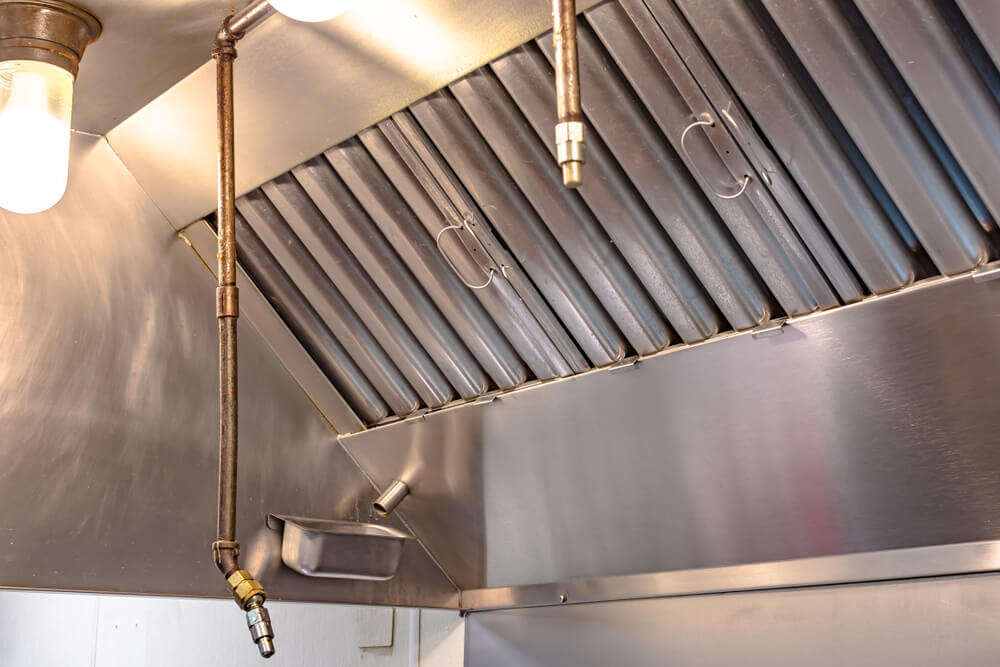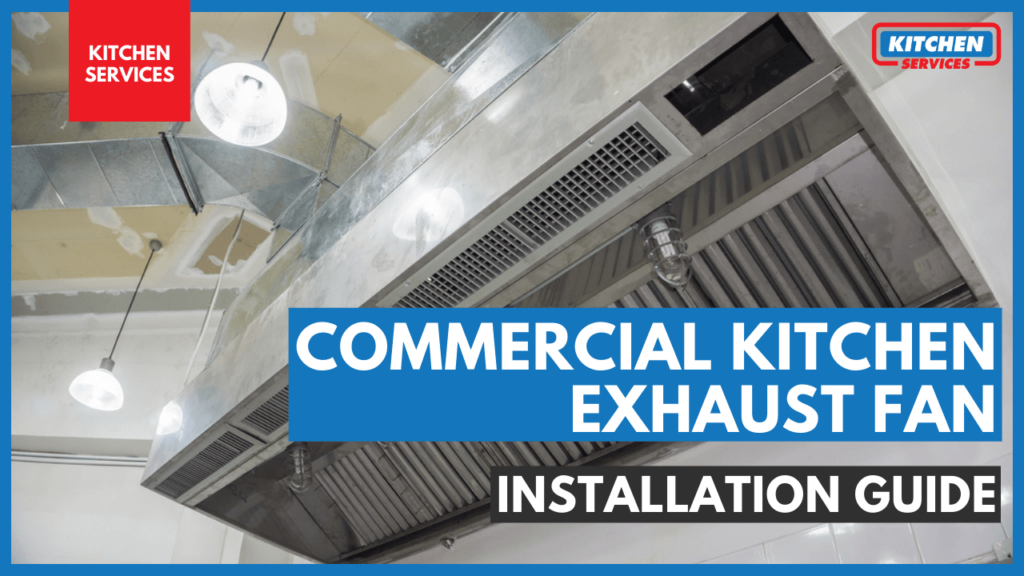If you really want to keep your commercial kitchen and restaurants run efficiently, all you need to have is a restaurant exhaust fan. These exhaust fans will help to remove the excess smoke, grease, and all kinds of odors, and they will also improve the overall indoor air quality of both your restaurant dining areas as well as your kitchen. If you observe that you are really in the need of replacing your existing restaurant exhaust fan, you might be worried about the process that it is going to be very painful.
Here in this article, we are here to help all businessmen with the restaurant kitchen exhaust fan installation, which is not as difficult as you might think.
Some reasons that you need to replace your Exhaust Fan
- A lot of heavy grease jam may be caused by your old exhaust fan.
- In case you replaced your whole stove system that may increase the amount of smoke and grease and it may require higher CFM exhaust fan, as your old one is not enough for it.
- Your old fan is unreliable and may require frequent servicing.
- Excess smoke and a lot of cooking odors are not being efficiently removed from the kitchen.
- Kitchen transformation that includes new commercial vent hoods should also have a new exhaust fan for them.
If you are looking for Exhaust fan installation services in Los Angeles and surrounding areas. Call our experts at Kitchen Services. We offer competitive prices and high-quality service.
How to Install Exhaust Fan in Kitchen?

Type and Size of Kitchen Exhaust Fan
If you want to find out that what type and size of restaurant exhaust fan you will need for your commercial use, you can search for many Hood & Fan Builder articles as it is a really simple tool that can save a lot of your time in searching out the best one for you. If you already know what size and type you actually need, you may just head over to the rooftop ventilation fans in there you can find the lowest prices and free shipping on exhaust fans. You will also find a lot of basic and helpful hood and fan accessories, hood filters, and hood and fan cleaning supplies as well.
After you have selected and ordered your commercial exhaust fan or any other important accessories for instance a rooftop grease containment system or an exhaust fan hinge kit, there comes the time to install it in a perfect way because these things are not supposed to be changed daily. So, the basic installation process may include the following 10 steps and can typically be done by an electrician or handyman in an hour or less.
Ten Basic Steps of Kitchen Exhaust Fan Installation
- Cut off the electricity
- Remove the old fan from the current roof curb
- Place the new fan onto the top of the edge and secure it to the curb
- Connect the exhaust fan motor to the electric power source
- Check the duct wheel for free rotation
- Fasten your exhaust fan joint
- Check all ties for tightness
- Reinstall the fan motor dome
- Reconnect the electricity
- Power up.
Location for Kitchen Exhaust Fan Installation
Some of the major things you will need to consider before installing an exhaust fan include locating the exhaust fan close to the space that it will be working. This will help in reducing long and twisted tube runs which can be the reason for significantly slow down the working of the fan. You need to confirm that the fan discharge is located at least 10 feet away from any supply intakes and make sure that the discharge is at least 40” above the roof surface according to the NFPA 96.
Always seek advice from a Professional
Before you begin with the installation of any type of restaurant exhaust fan, you should always seek advice from a professional. In case you are installing a new fan into a totally new location, before performing any sort of installation, you will first need to establish the location of the vent hood and then the main exhaust duct. No matter how much the work burden is if you have a professional person involved in this process, it is always a good idea to understand how to install a restaurant exhaust fan.
Rules & Regulations for Kitchen Exhaust Fan Installation
Always remember that the professional installer will be able to help you check all the local regulations, many building codes, and the NFPA fire code for a complete list that is required. Also, your insurance company may have certain conditions for all your ventilation systems and commercial kitchen exhaust fan, so make sure to check with them as well.
Do you actually need a roof curb?
It can always be a good idea if you double-check all of your measurements because the next step of exhaust installation is about cutting a roof opening in which you have to place the roof curb. Every so often people are not actually sure if they need a curb or not. In case you are installing your fan on a roof, then you will have to open the curb. The curb is basically placed over the opening in the roof and flashing is being added around so that it can secure it onto the roof deck easily.
Your restaurant exhaust fan is then placed into the curb and is secured in its place. Without a roof curb, your fan cannot be properly secured in place, and it may become damaged as well as damage your roof. Roof curbs also provide added protection to your fan from harsh weather.
Safety Precautions
While you work with a professional installer, you will have to make sure that all electrical wiring and connections are done in agreement with local ordinances, building codes, the National Electric Code, and NFPA 70. You must follow all local electrical and safety codes and the requirements set forth by the National Electrical Code (NEC), the Occupational Safety and Health Act (OSHA), and the National Fire Protection Association (NFPA) Bulletin 96.
Site Preparation
Site preparation is another very important first step in how to install a restaurant exhaust fan. Even if you have someone who is professional coming to help you, you can help out with some of these steps:
- You will have to provide sufficient clearance around restaurant exhaust fan installation site
- You will have to make sure that you have a grease drain that is piped to an approved grease containment system
- You should always maintain clearance to combustibles
- The exhaust fan must be installed on a manufactured or factory-built roof curb
- Always disconnect power before you install a rooftop ventilator
A Few More Things You Should Know About Kitchen Exhaust Fan Installation

Handle with care
You should know that your commercial kitchen exhaust fan will always come with a complete set of comprehensive instructions from the company for your assistance on how to install a restaurant exhaust fan. While you are handling your fan, never lift it by the fan hood. You should also avoid lifting your fan in a way that it might get bent or distort any fan parts. If you carefully handle your exhaust fan it will help prevent damage to both your fan and your roof as well.
You might need a roof curb
If you do not already have a roof curb installed at your roof, you will have to install a roof curb for this matter. You can always follow the manufacturer’s guidelines and instructions so that you may secure the curb to the rooftop. If in any case your ventilation system requires a backdraft damper, your restaurant exhaust fan installation guide will tell you how to secure it within the curb, to the bottom of the damper box, or to the damper support flanges that are typically located below the roof deck.
Electrical and power
At the time of installation, you will first have to make sure that your power source is similar to the requirements of your commercial kitchen exhaust fan equipment that are there on the menu. Always make sure that you always disconnect the power supply before beginning any work on or near an exhaust fan. It is always a good idea to get hold of the power cable to avoid any sort of accidental contact with sharp objects or tools. You should also lock and tag the disconnect switch or the breaker to prevent any accidental power-ups.
Your power cable should never be allowed to come in contact with hot surfaces, oil, grease, or any other chemicals. Also, make sure that the power cable does not become kinked. You should always use extreme caution around motors as they can get very hot and cause severe injury. You must always allow the exhaust fan motor to cool before you serve it or adjust it.
Also Read: Types of Exhaust Fans
Conclusion
In conclusion, proper installation of a commercial kitchen exhaust fan is essential for maintaining a safe, efficient, and compliant kitchen environment. By following the correct procedures for placement, wiring, and ventilation, you ensure optimal airflow, reduce fire hazards, and improve air quality. A well-installed exhaust fan not only protects your kitchen staff but also enhances the performance of your equipment and overall kitchen operations. Prioritize professional installation and regular maintenance to ensure long-term reliability and efficiency
Restaurant Exhaust Fan Installation FAQs
Where to install exhaust fan in kitchen?
The exhaust fan in a kitchen should be installed directly above the cooking area, typically over the stove or range, to effectively capture and remove smoke, steam, and odors. Ensure it is positioned according to the manufacturer’s height recommendations, typically 24 to 30 inches above the cooking surface.
How to install an extractor fan for the kitchen?
To install a kitchen extractor fan, select an appropriate location above the cooking area, then cut an opening in the wall or ceiling for ductwork. Secure the fan and connect the exhaust duct to vent air outside. Wire the fan to a power source, ensuring it complies with electrical codes.
How to install kitchen smoke extractor?
To install a kitchen smoke extractor, position it above the stove or cooking area. Cut a hole for ductwork, install the exhaust ducts leading outside, and mount the smoke extractor securely. Connect the wiring according to the manufacturer’s instructions, ensuring proper power supply and ventilation path.
How do kitchen exhaust fans work?
Kitchen exhaust fans work by pulling air, smoke, steam, and grease from the cooking area and expelling it outside through ducts. They improve air quality, reduce heat, and prevent the buildup of odors and grease, helping maintain a cleaner and safer kitchen environment.
How to install exhaust fan for restaurant hood?
To install an exhaust fan for a restaurant hood, position the fan within the ventilation system directly above the cooking equipment. Install ductwork to vent air outside, ensuring proper alignment with the hood. Connect the fan to a power source, following safety guidelines, and ensure it meets local code requirements for commercial kitchens.

